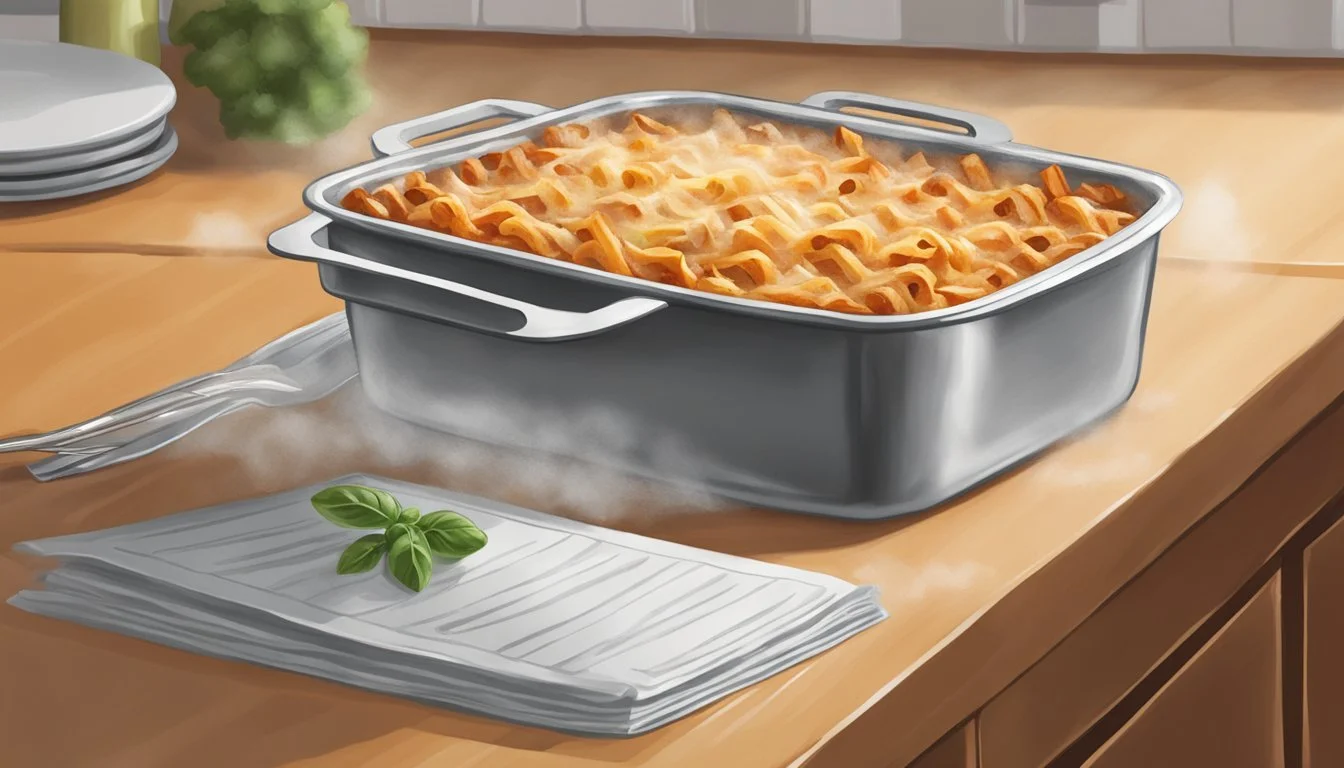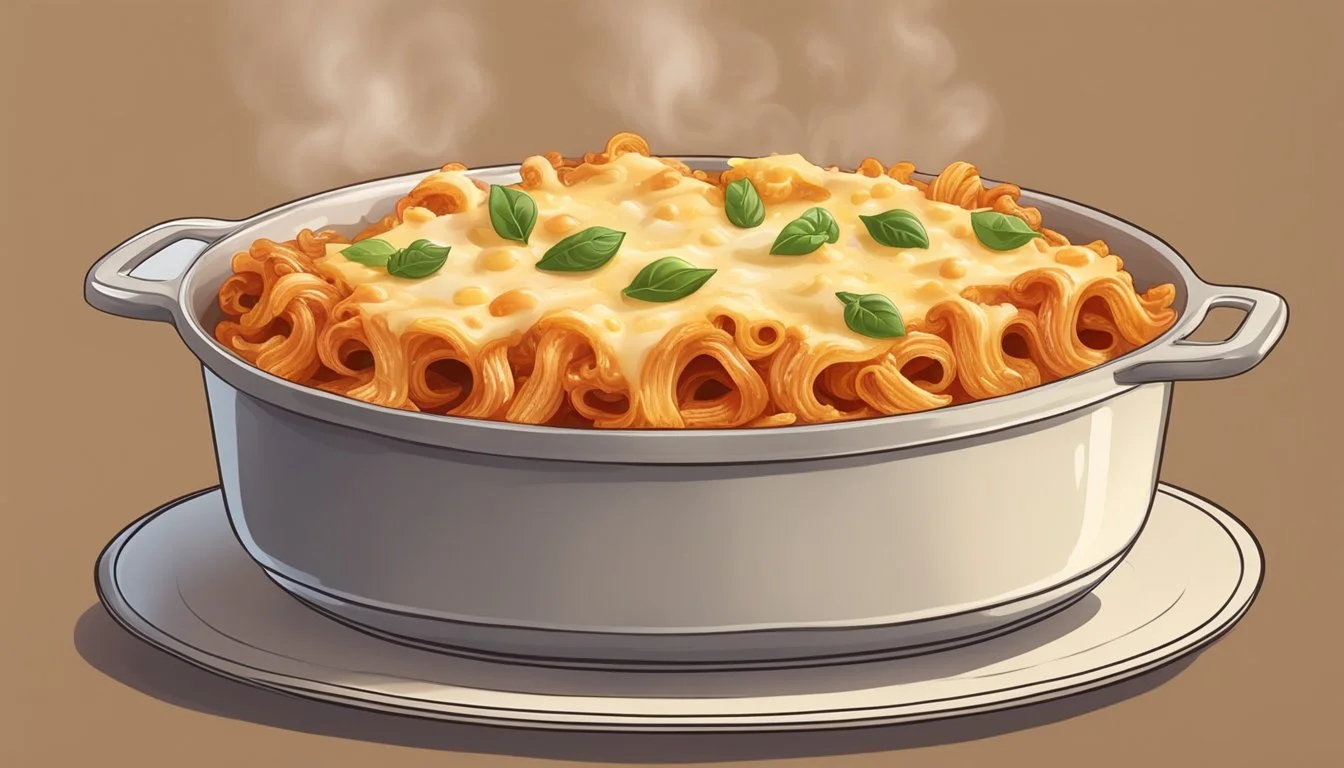How Long Does Baked Ziti Last?
Storage Tips and Safety Guidelines
Baked ziti is a classic and comforting dish that many people enjoy making ahead of time. It’s not only delicious but also versatile, making it perfect for various occasions, from family dinners to potlucks. When stored properly in an airtight container, baked ziti can last for up to 4 to 5 days in the refrigerator. This ensures that the dish remains safe to eat and retains its quality.
To get the most out of your baked ziti, it's crucial to transfer it to the fridge within two hours after cooking. This practice helps maintain its flavor and prevents any potential food safety issues. Beyond the 4 to 5-day mark, the quality and taste of baked ziti may begin to deteriorate, so it’s best to either consume it promptly or consider freezing it for future use.
One of the great things about baked ziti is its ability to be made ahead of time and stored. Whether you’re planning meals for the week or looking to save some for a later date, knowing how to store and reheat baked ziti can help you enjoy it at its best.
Overview of Baked Ziti
Baked ziti is a classic Italian-American pasta dish known for its hearty and comforting qualities. It typically features ziti noodles, a tube-shaped pasta similar to penne and rigatoni, but distinct in its smooth texture and larger size. The pasta serves as the base, absorbing the flavors of the sauce and cheese.
Ingredients often include ricotta, mozzarella, and Parmesan cheeses, creating a rich, creamy texture. Sometimes Romano cheese is also used. Meat, such as Italian sausage or ground turkey, adds a savory element to the dish. For a vegetarian option, the meat can be omitted.
Sauce choices generally include marinara or meat sauce, both providing a robust flavor profile. The combination of cheesy goodness with marinara or meat sauce results in a delightful umami experience.
To assemble the dish, ziti noodles are cooked al dente and mixed with the sauce and cheese mixture. A popular method involves layering the pasta with alternating layers of sauce and cheese in a baking dish. This method ensures that each bite is filled with an even distribution of ingredients.
Baking the ziti in the oven at 375°F allows it to develop a golden, bubbly top layer. A glass casserole dish or a large oven-safe skillet is ideal for baking. The noodles become tender, the cheese melts, and the flavors meld together.
Baked ziti is known for its versatility. It can be prepared ahead of time and even stored as leftovers. To extend its shelf life, it's essential to store it in an airtight container. Properly stored in the refrigerator, baked ziti lasts up to five days. For longer storage, freezing is an option, although it may slightly affect the dish's quality.
Nutritional Information:
Ingredient Portion Size Calories Ziti Pasta 1 cup cooked 200 Marinara Sauce 1/2 cup 70 Ricotta Cheese 1/4 cup 100 Mozzarella Cheese 1/2 cup shredded 170 Parmesan Cheese 2 tbsp grated 50 Italian Sausage 1 link 200
This pasta dish is a favorite for family dinners, potlucks, and gatherings due to its simplicity and delicious taste. Whether made with a classic meat sauce or a vegetarian option, it embodies home-cooked comfort food.
Proper Storage Methods
For fridge storage, transfer baked ziti to an airtight container or wrap it tightly with plastic wrap or aluminum foil. This prevents exposure to air and slows the growth of mold.
In the refrigerator, baked ziti should be stored within two hours of cooking. It will typically last 4 to 5 days in the fridge. Using refrigerator-safe containers ensures better quality.
Freezing baked ziti extends its shelf life to about 3 months. Before freezing, let it cool completely. To prevent freezer burn, wrap it tightly in aluminum foil or place it in a freezer-safe container.
When preparing for storage, applying a thin layer of olive oil to the top can help prevent the pasta from drying out. This method also preserves the texture and taste.
Leftovers should be checked thoroughly for food safety. Look for any signs of spoilage, including unusual odors or visible mold.
When reheating, make sure the internal temperature of the warmed ziti reaches 165°F (74°C) to ensure it's safe to eat. Using a casserole dish covered with foil can help retain moisture.
Proper storage methods not only extend the shelf life of cooked ziti but also maintain its flavor and texture. Ensuring proper sealing and timely refrigeration or freezing preserves the dish's quality and safety.
Freezing and Thawing Baked Ziti
To freeze baked ziti, start by allowing the dish to cool completely. Cooling prevents condensation, which can lead to freezer burn. If the ziti contains meat, ensure it is cooled safely before freezing.
For best results, divide the ziti into smaller portions. This makes thawing and reheating more manageable.
Steps for Freezing Baked Ziti:
Prepare and cool the baked ziti.
Portion into individual or family-sized servings.
Wrap each portion with a double layer of foil.
Place wrapped portions in freezer-safe containers.
Label and date the containers.
Baked ziti can be stored in the freezer for up to two months. Ensure the freezer is at a consistent, cold temperature to maintain food safety and quality.
When ready to thaw, transfer the ziti from the freezer to the refrigerator. Allow it to thaw slowly overnight. This method ensures even thawing and reduces the risk of bacterial growth.
For quicker thawing, use the microwave. Set it to the defrost setting and check periodically to prevent overcooking.
Oven: Preheat to 350°F. Remove the foil, cover with fresh foil, and heat for 20-25 minutes. Uncover for the last 10 minutes to achieve a crispy top.
Microwave: Place the thawed ziti in a microwave-safe dish. Heat on medium power, stirring occasionally, until hot.
It is essential to reheat baked ziti to an internal temperature of 165°F for safety. This is particularly important for dishes containing meat.
Maximizing Freshness and Longevity
To keep baked ziti fresh and safe to eat for as long as possible, proper storage is essential. Store the baked ziti in airtight containers or ziplock bags. This helps to prevent exposure to air and moisture, which can quickly degrade its quality.
Transfer the dish to the refrigerator within two hours of cooking. The ideal storage temperature is 40°F or below. This minimizes the risk of bacterial growth. If the dish contains perishable ingredients like ground beef or sausage, consume it within three to five days.
Using mozzarella cheese or ricotta cheese? Ensure they are evenly distributed throughout the pasta to maintain flavor and texture. To further extend freshness, cool the baked ziti completely before storing. This avoids condensation inside the container, which could make the pasta mushy.
Storage Tips
Refrigerate within two hours of cooking
Use airtight containers or resealable plastic bags
Maintain a fridge temperature of 40°F or below
Freezing
For longer storage, freeze the baked ziti. It can last up to three months in the freezer. Use freezer-safe containers, and label them with the date. Although freezing may slightly affect texture, the overall taste will remain relatively intact.
Reheating
When reheating, ensure the baked ziti reaches an internal temperature of 165°F. This ensures that any potential bacteria are killed. Consider adding a bit of olive oil or extra sauce to maintain moisture and flavor.
By following these guidelines, one can enjoy baked ziti at its best, preserving the flavors of mozzarella cheese, basil, garlic, and other seasonings.




